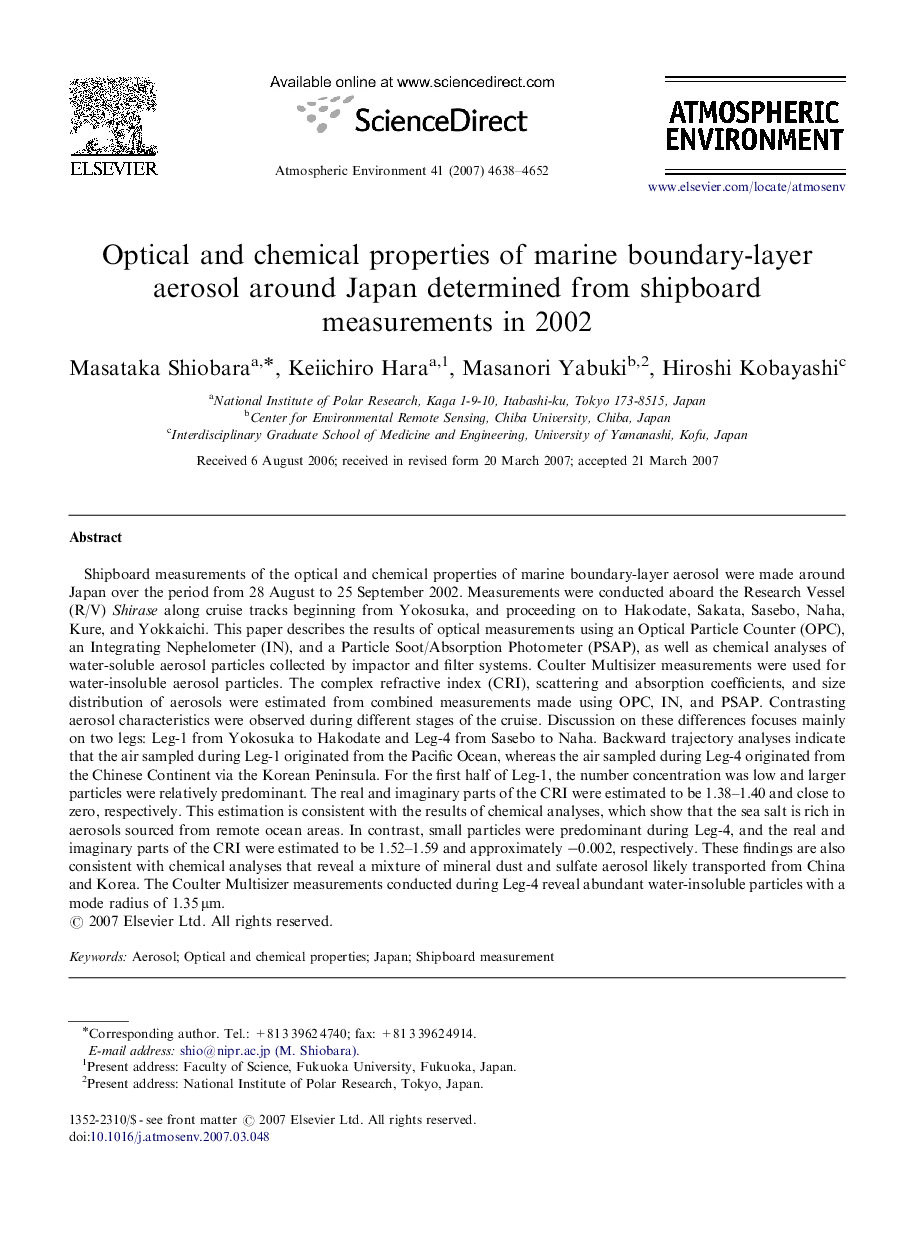| Article ID | Journal | Published Year | Pages | File Type |
|---|---|---|---|---|
| 4443531 | Atmospheric Environment | 2007 | 15 Pages |
Shipboard measurements of the optical and chemical properties of marine boundary-layer aerosol were made around Japan over the period from 28 August to 25 September 2002. Measurements were conducted aboard the Research Vessel (R/V) Shirase along cruise tracks beginning from Yokosuka, and proceeding on to Hakodate, Sakata, Sasebo, Naha, Kure, and Yokkaichi. This paper describes the results of optical measurements using an Optical Particle Counter (OPC), an Integrating Nephelometer (IN), and a Particle Soot/Absorption Photometer (PSAP), as well as chemical analyses of water-soluble aerosol particles collected by impactor and filter systems. Coulter Multisizer measurements were used for water-insoluble aerosol particles. The complex refractive index (CRI), scattering and absorption coefficients, and size distribution of aerosols were estimated from combined measurements made using OPC, IN, and PSAP. Contrasting aerosol characteristics were observed during different stages of the cruise. Discussion on these differences focuses mainly on two legs: Leg-1 from Yokosuka to Hakodate and Leg-4 from Sasebo to Naha. Backward trajectory analyses indicate that the air sampled during Leg-1 originated from the Pacific Ocean, whereas the air sampled during Leg-4 originated from the Chinese Continent via the Korean Peninsula. For the first half of Leg-1, the number concentration was low and larger particles were relatively predominant. The real and imaginary parts of the CRI were estimated to be 1.38–1.40 and close to zero, respectively. This estimation is consistent with the results of chemical analyses, which show that the sea salt is rich in aerosols sourced from remote ocean areas. In contrast, small particles were predominant during Leg-4, and the real and imaginary parts of the CRI were estimated to be 1.52–1.59 and approximately −0.002, respectively. These findings are also consistent with chemical analyses that reveal a mixture of mineral dust and sulfate aerosol likely transported from China and Korea. The Coulter Multisizer measurements conducted during Leg-4 reveal abundant water-insoluble particles with a mode radius of 1.35 μm.
